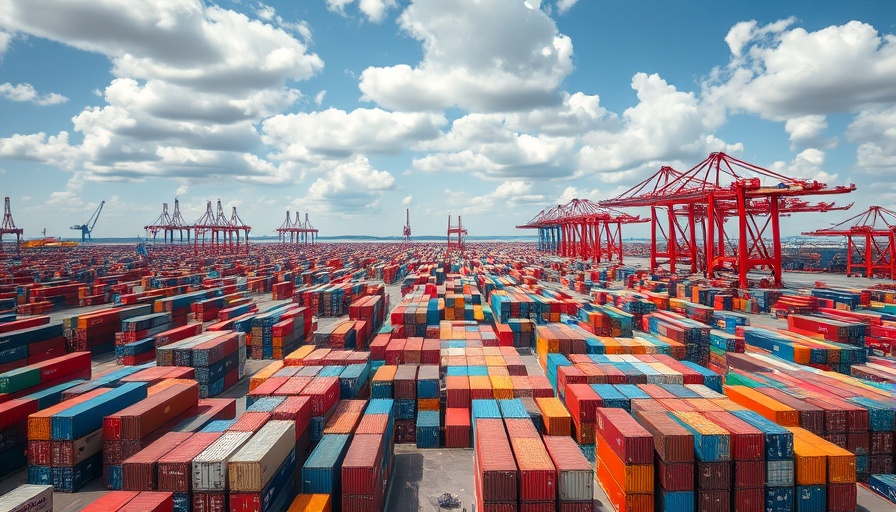
American Consumers Brace for Shortages Amid Rising Tariffs
With the first boats carrying goods from China now arriving at the Port of Los Angeles, the impact of steep tariffs on imports is becoming increasingly evident. As the U.S. imposes a staggering 145% tariff on many Chinese goods, consumers should prepare for rising prices and potential shortages that could transform shopping habits nationwide.
The Rise of Tariffs and Their Ripple Effect
American businesses are feeling the pressure as imported goods become significantly more expensive due to tariffs. According to Gene Seroka, executive director of the Port of Los Angeles, import volumes have plummeted by over 50%. This dramatic decline in shipments, down approximately 35% compared to last year, speaks to the rising costs associated with these trade policies. “Retailers and importers alike are telling me that the products now cost about two and a half times more than they did just last month,” he warned.
Storing Goods vs. Paying Tariffs: A Costly Choice
In an ironic twist, some retailers are opting to store their products in Chinese warehouses to avoid hefty tariffs, highlighting the unique pressures of the current environment. Flexport CEO Ryan Petersen noted that this choice assists companies in keeping costs more manageable despite the ongoing trade war. However, with predictions of a 60% decline in container shipments, the effects will soon be palpable to consumers as they cope with the consequences of limited availability.
A Glimpse Into the Future: Price Hikes and Empty Shelves
As inventory levels dwindle, experts are sounding alarms regarding the impending shortages of essential goods. The National Retail Federation projects a significant 20% drop in imports for 2025 overall, with even steeper declines in goods from China. JP Morgan estimates a staggering reduction of 75% to 80% in Chinese imports, foreshadowing empty shelves and a limited selection for shoppers.
The Social Dimension of Trade Wars: Who Suffers?
This trade war situation is more than just numbers on a spreadsheet; it affects the daily lives of countless consumers who are now faced with costly decisions. Purchasing more expensive alternatives or settling for less desirable options become the new normal for many. As stores deplete their stored inventory, shoppers may encounter frustrating gaps in availability, particularly during peak buying seasons.
Consumer Response: Adapting to New Realities
This trade conflict introduces urgent questions about how American consumers will adjust to these changes. Will they seek out domestic products to fill the void, or will they simply settle for less? Such decisions will have long-term implications for both domestic businesses and the broader economy.
Preparing for the Unpredictable: What Consumers Can Do
In anticipation of these likely shortages and price increases, consumers can adopt strategies to mitigate their impact. Shopping local, while originally viewed as a lifestyle choice, may become a necessary option for many as U.S. retailers try to fill gaps left by declining imports. This shift could spur an unexpected yet welcome boost for local businesses, ultimately fostering community resilience.
As the landscape of trade continues to evolve, it is essential for consumers to stay informed about the changing tides of availability and pricing. Understanding the dynamics at play in this trade war can empower more strategic buying decisions, paving the way for smarter spending habits that adapt to new realities.
In a time of uncertainty, knowledge is power. As shelves begin to show signs of empty spots, familiarize yourself with alternative products and support local businesses whenever possible. This approach not only aids in navigating potential shortages but invigorates the local economy, transforming challenges into opportunities.
 Add Row
Add Row  Add
Add 




 Add Row
Add Row  Add
Add 

Write A Comment